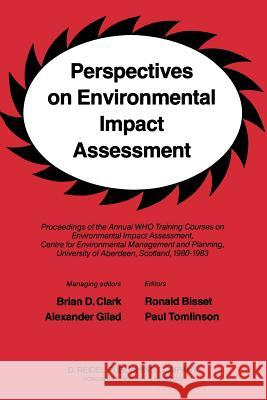Perspectives on Environmental Impact Assessment: Proceedings of the Annual Who Training Courses on Environmental Impact Assessment, Centre for Environ » książka
Perspectives on Environmental Impact Assessment: Proceedings of the Annual Who Training Courses on Environmental Impact Assessment, Centre for Environ
ISBN-13: 9789400963832 / Angielski / Miękka / 2011 / 520 str.
Perspectives on Environmental Impact Assessment: Proceedings of the Annual Who Training Courses on Environmental Impact Assessment, Centre for Environ
ISBN-13: 9789400963832 / Angielski / Miękka / 2011 / 520 str.
(netto: 546,94 VAT: 5%)
Najniższa cena z 30 dni: 574,29 zł
ok. 20 dni roboczych.
Darmowa dostawa!
The experience of highly industrialized countries demonstrates that single-minded pursuit of economic develop ment is self-defeating because, by disregarding the other components of what is cxmnonly called "the quality of life," it creates conditions which are not acceptable to large sectors of the population. In the recent past a number of projects, for example, major darns, have had unexpectedly deleterious social, envir onmental and health consequences. As a result, many govern ment department and agencies are investigating the impacts of specific projects and are examining the role impact analysis could play in project planning. The process of environmental impact analysis has been developed, tested and institutionalized in several countries. The objective of the process is a prior identification and definition of likely environmental impacts of projects such as public works, industrial developments and tourist develop ments, as well as the impact of policies and legislative proposals. The environmental impact analysis process also includes the definition of alternative courses of action which would achieve comparable economic objectives while eliminatir .. g some or all of the detrimental environmental consequences. Identification of preventive or precautionary measures, which would minimize the unavoidable impacts, fonn an integral part of the process. The aim should be for a balanced appraisal in which economic, technical, social, environmental and health aspects are fully evaluated. Thus viewed, environmental impact analysis emerges as one of the most powerful planning tools for the prevention of environmental pollution and degradation."











